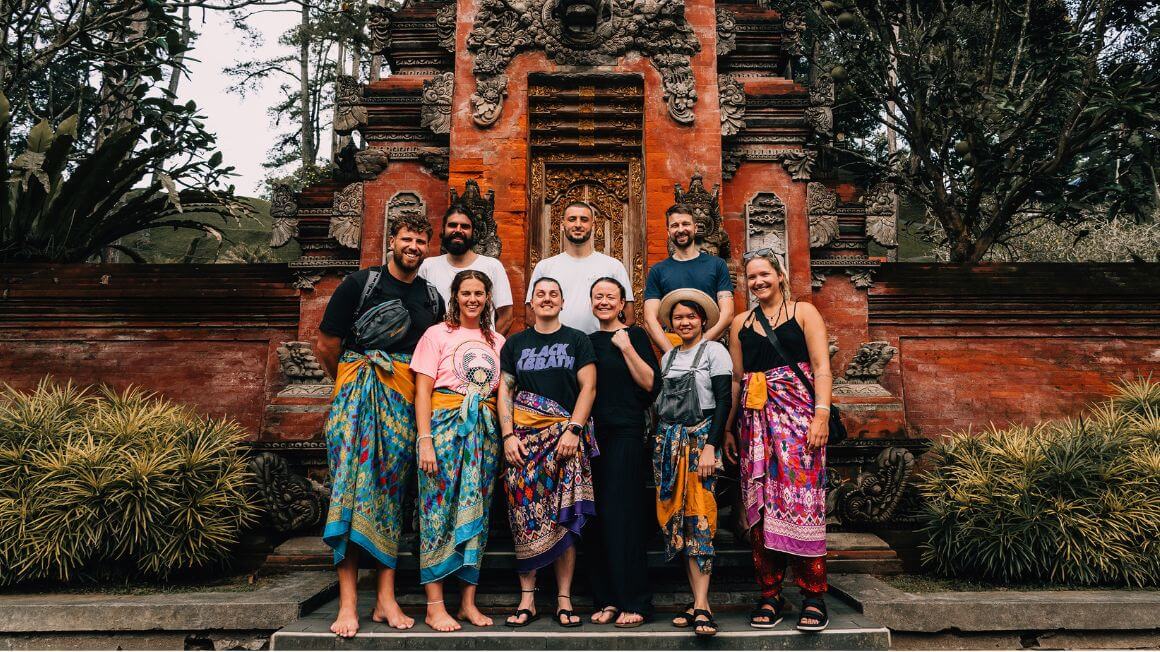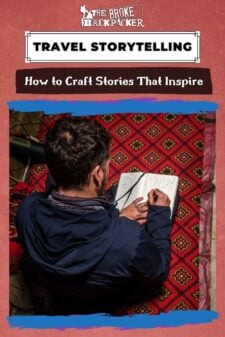The Broke Backpacker is supported by you. Clicking through our links may earn us a small affiliate commission, and that's what allows us to keep producing free content 🙂 Learn more.
It all started with a raggedy old journal, stuffed somewhere in my 70L pack (my home) as I wandered across India some time around 2010.
Facebook was still in its early days, and TikTok didn’t exist. I started by writing by tales on an ancient iPod touch, and every so often, I’d pop into an Internet cafe and send out a newsletter of my fantastical moments from the road to a few close friends and family.
By 2013, this had evolved into the blog you’re reading today, and since then, travel storytelling trends have changed a lot. HOWEVER, the core tenets remain the same:
Raw emotion and tantalising tale-telling that bring the reader/viewer along for the ride with you.
If you’ve ever thought about taking your time on the road, public – whether that be through a travel blog, journalism, social media or YouTube, make yourself comfortable because we’re getting into it all. From more than a decade of putting my expeditions out there, this is The Broke Backpacker’s epic guide to becoming a travel storyteller.
What is Travel Storytelling?
This used to mean books and journals, and those will always be my favourite adventure tales.
But these days it’s a whole lot more than that as short-form video continues to define the industry. And while there are some specific editing tools and bits you need for all that, the skills you need to tell a good story are really quite similar – it’s all about looking into the fucking camera, and taking the audience along for the ride.
If you can make a reader feel like they’re actually there with you, spending the night at a train station in the heart of India, or witnessing the magic of a whale migration on a remote island in French Polynesia, you’re golden.
As it was with the great adventurers of the 18 and 1900s, imagery is everything.
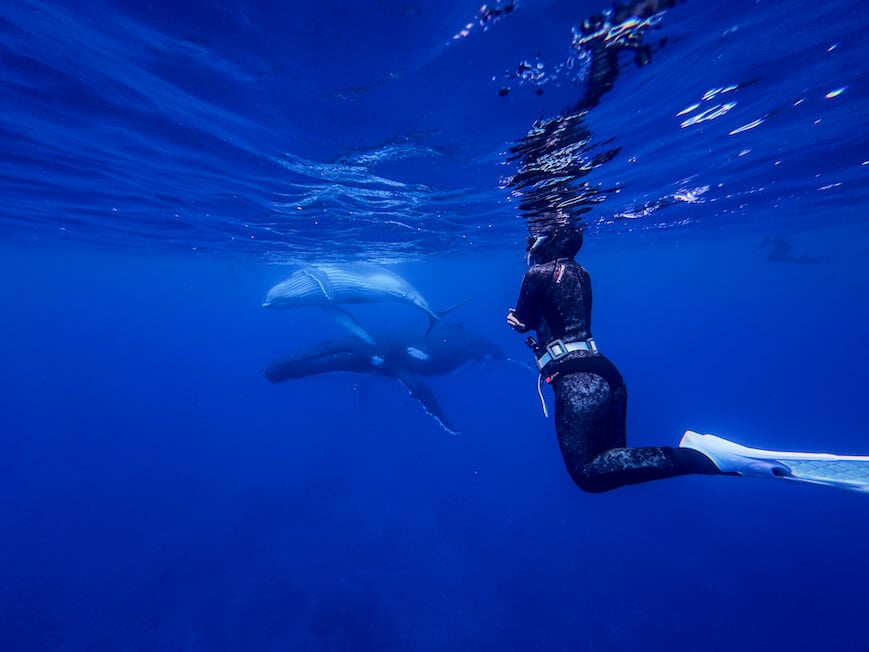
Photo: @audyscala
The Broke Backpacker is supported by you. Clicking through our links may earn us a small affiliate commission, and that's what allows us to keep producing free content 🙂 Learn more.
If you’re writing, you already know what I’m talking about. But even with video content, I’ve seen one too many travel vlogs where the entire episode is essentially staring at a man’s face while he walks around and points out very obvious things.
That, my friends, is NOT travel storytelling.
Cuts, angles, music and voiceovers that give you that quintessential “show, don’t tell” vibe are.
A truly immersive experience – makes you FEEL something, and puts your audience right there beside you, even when they’re half a world away.
How to Start Travel Storytelling
Well, first off, amigo – you’ve got to pick something and stick with it.
That doesn’t mean you can’t eventually add in more channels/mediums or even switch to something new altogether, but when you’re just starting out, you CANNOT do it all.
I’ve tried that and it burned me out. You don’t want to hate the craft before you even connect with your audience.

Photo: @willhatton__
So that means you need to find your voice, whether it’s written or spoken, and run with it. Here are a few cheeky bits to think about:
- Who are your favourite travel storytellers?
- Where do you plan to travel?
- Who are you trying to reach?
While editing skills (especially when it comes to videos) can certainly enhance your travel story, it’s the words and RAW footage that shall guide your craft.
Types of Travel Storytelling
There’s certainly more than the below, but in today’s digital world, these are what you can choose to weave your travel tales into:
1. Travel Writing
We can’t start ourselves off with anything other than the original form of travel storytelling: the written word. Considering so much of good video content requires excellent scripting, I reckon that no matter what you choose to do, you need to be familiar with how to write about your adventures.
The OG travel storytellers were writers, and it’s no surprise that the most famous travel tales in history are not on Instagram but were published in paperbacks decades and centuries ago.
While we may be far from that golden, lost age, there are still various paths you can take as a writer, and there’s only one wrong one: AI.
I’m not going to get into a prolonged diatribe here, but ChatGPT and the like destroy creativity, and using it to write for you will never make you a travel storyteller, just a fraud. So I urge you to use your brain and channel authenticity.
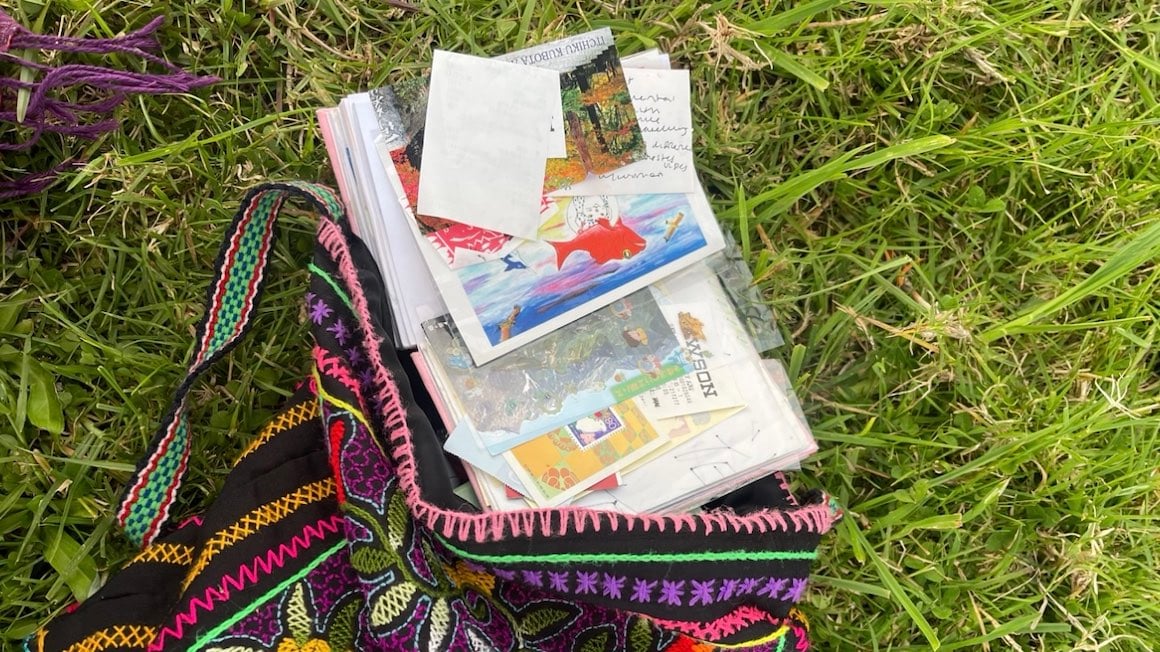
Photo: @audyscala
But now on to the niches:
- Travel blogging: While Google has put a curse on the field these days, it’s still one of the easiest ways to get your stories out there. The barrier to entry is pretty low once you’ve set up your domain and theme. SEO is still important, and you can’t always write exactly what you want, as no one may be searching for it. But with the rise of social media traffic, it’s one of the best times to make authentic and unique travel stories and information shine.
- Travel writing for publications: I’ve been published in all kinds of major media over the years, and these have been some of my favourite stories to write. They usually won’t be guides, but a mix of personal narratives and investigative journalism. A blog is a great way to showcase your portfolio when you’re first starting out, but it’s always possible to get a commission as a true noob with a cheeky pitch.
- Travel books and memoirs: This is by far the hardest kind of travel storytelling to break into, and I’m saying this to you as a published author. It’s exceptionally unlikely that you’ll get a deal as someone just starting out, and to self-publish, you need an audience. Still, don’t let your dream die if writing a book is in fact your goal – just know you’ll likely have to get started in another way.
2. Short Form Content
Currently king of the internet, short-form content typically comes in the form of Instagram Reels, TikToks and YouTube Shorts.
Back in the day, I became somewhat famous over on Snapchat, creating a mix of live streams and proper short-form videos as I traipsed about some of the lesser-visited corners of our world.
I guess I was ahead of the game, if you will!

Photo: @willhatton__
Just about eight years later, short form is winning, but I wouldn’t say it’s my preferred form of travel storytelling. I don’t believe that viral videos of crazy or shocking events fall into the category, and unfortunately, that’s what these algorithms prioritise.
Still, REAL storytelling is becoming more and more popular as each app is becoming more fond of longer videos (up to three minutes on Instagram and YT, up to an hour on TikTok) and there certainly is a lot you can do with that timeframe. But be warned – if you’re looking to head this route, you’re going to have to accept there’s going to be a major learning curve.
I’ll be very honest with you that being a travel creator is not one with being a travel storyteller. Syncing music to clips is content, but it’s not what I envision when I think of solid short-form storytelling.
That, dear reader, involves:
- Videos that are at least 30 seconds long
- The use of multiple visual, audio and text-on-screen hooks
- Voiceovers/mini vlogs
- Or for photo carousels on Instagram, adding visually appealing text on each slide to bring the story home
- Human-written captions that add value
- Series (like bite-sized TV shows) that viewers will be keen to follow along with
To create the above, you’ll really need to get used to filming a LOT of your travels, which can be quite stressful, especially if you’re not used to that.
As previously mentioned, you’ll also need to get very familiar with your preferred editing tool. These days, your main options are:
- CapCut (Pro Version)
- Edits (A recently announced Instagram-owned app)
- Final Cut Pro X (but only if you have a MacBook + also plan to do long-form video)
The good thing about this type of content is that it’s easy to start practising – go on a micro adventure near home and get recording. Nothing *needs* to be published.

3. Long Form Content
This is where proper YouTubing (not Shorts) comes into play. I will warn you – this is NOT easy, and that’s why most Instagram and TikTok famous folks are not producing this type of content.
It involves significant amounts of time, skill, and foresight. But the very best thing about it is how rewarding it is – you truly earn every view you get. Viewers and subscribers also tend to be more engaged and have an attention span longer than that of a newborn child. (No, I’m not the biggest fan of TikTok-style brain rot if you couldn’t tell.)
Assuming you’re planning to head into the travel vlogging space, there are quite a few routes you can take:
- SEO guides – These are videos/channels that really dive into YouTube SEO and create videos that are similar to blog posts. So think titles like “The Best Places to Visit in Bali” or “48 Hours in Tokyo: What to Do, See and Eat.” These videos are often split into clear chapters and utilise a mix of voice recordings and real-time narration, depending.
- Cinematic films: When these are done well, they’re truly some of the best travel videos out there. This is where you’re absolutely going to need a professional camera, a high-quality microphone, and a ravenous approach to learning the ins and outs of editing. On top of all that, you’ll also need a music license subscription and a professional editing tool like Premiere, Final Cut Pro X, or DaVinci Resolve.
- Raw travel vlogs: These are typically filmed with an action camera and certainly have storytelling potential, but many just keep the camera on their face and talk the whole time about nothing I’ve ever found that interesting. While there is a small subset of individuals funny and engaging enough to do long-winded monologues on city streets, most people watch travel vlogs to travel vicariously. Don’t, and this goes for all types of travel storytelling, make it all about you. And never unethically use locals for content either – while many will be happy to join in your video, that doesn’t account for everyone.
My Top Tips to Enhance Your Travel Stories
Overwhelmed yet?
If you’re here in the first place, the desire to put your adventures into something more is clearly already deep inside of you.
So let’s faff on with some tricks I wish I knew when I began this journey more than a decade ago, filled with what I wish I knew along the way:
1. Emotion is king, always.
If you can make someone *feel* something, they’re much more likely to keep reading or watching. My favourite way to do this is via immersive language and, in the case of video, immersive editing. Show them through words where you are, don’t just say it. Film five angles instead of just one for something truly “lifelike.”
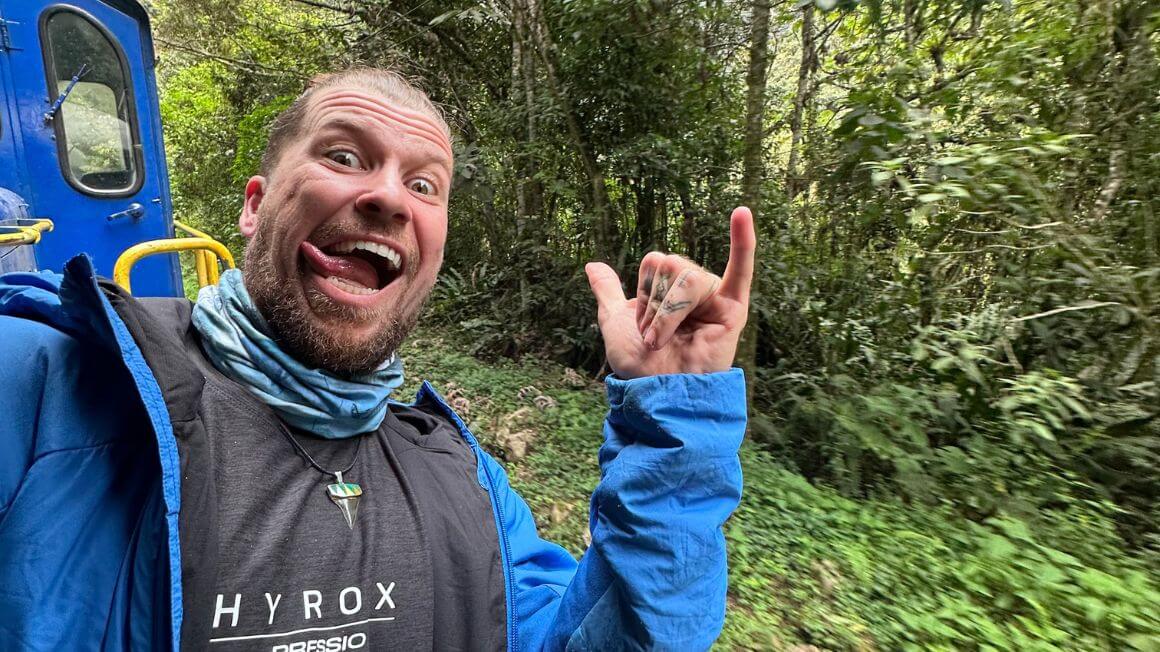
Photo: @willhatton__
2. Write/edit as if you have NEVER seen or heard of the place you’re describing.
Because most of your viewers have. And you cannot assume they have any background knowledge – that’s how you get folks to click away, which tanks your metrics.
3. Audio trumps visuals, always.
Even if you don’t have the latest camera or editing software, make damn sure your audio is on point. And if it isn’t – I trust you’ll be adding in some subtitles 😉
4. Go slow.
Set the scene, provide some context, and do not speak a million miles a minute. Yes, clips should be somewhat fast-paced to keep attention, but your viewers need to understand what you’re saying first and foremost.
5. Stay consistent.
Whether you plan to start your own travel blog or go all in on the journey to a YouTube wall plaque, it is consistency that will bring you farther along than even sheer talent. I know plenty of very talented people who fail to succeed in the way they want because they fail to stick to a content schedule. Even if that means writing a personal manifesto, do it!
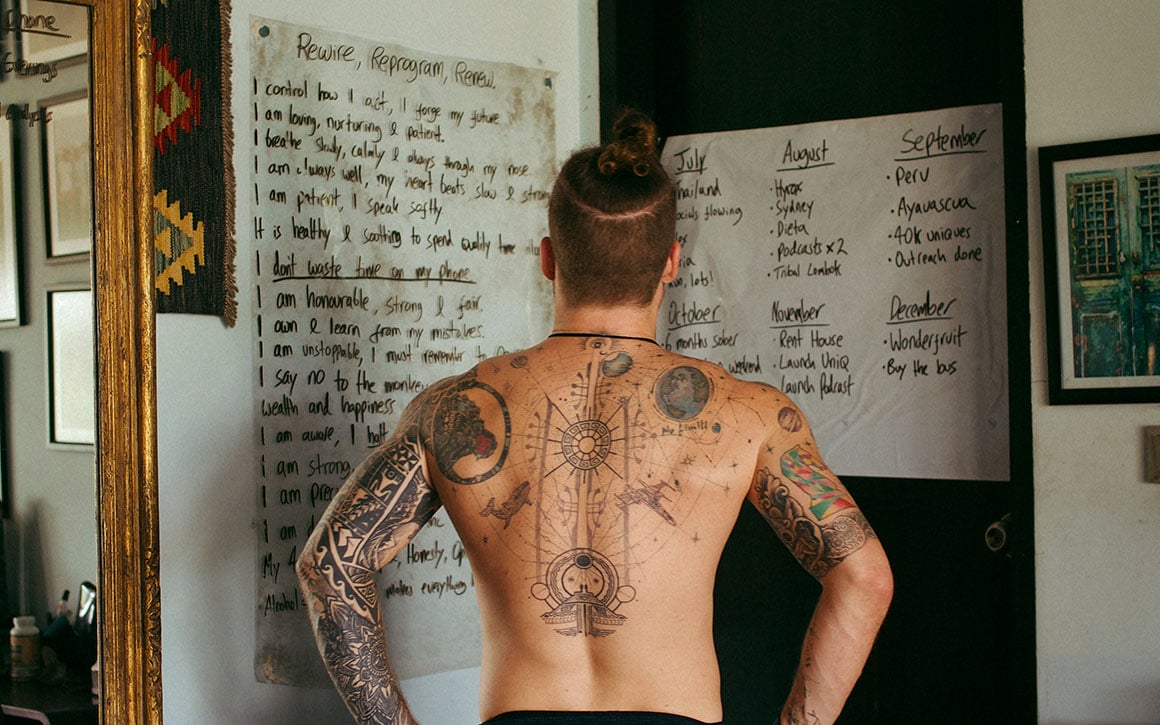
Photo: @willhatton__
6. Read books and consume content that inspires you.
I’m the last person to suggest you spend more time on your phone in that latter part of the suggestion, but hear me out. To learn more about your preferred craft, you need to see what works and what performs well. You may even get inspired about where to hit the road next.
7. Never stop learning
Whether it be about SEO, colour grading, or anything else, there’s no excuse with billions of hours of free content out there to help you level up your game.
8. Don’t be afraid to try new things.
The wonderful thing about sharing your travel adventures with the world is that you truly can forge your own path – there’s no one-size-fits-all here. If you get started and find it’s either not working or you’re not enjoying it, get back on the metaphorical horse and go in a new direction.
9. Find other travel storytellers to sound off with.
Getting solid advice from other creators is a freaking splendid idea. Whether it’s people you know in real life or an online group you find and join, I can assure you that you will grow faster and have a much easier time with others in your corner. Even if the stories they are telling are not exactly about travel, they can still help.
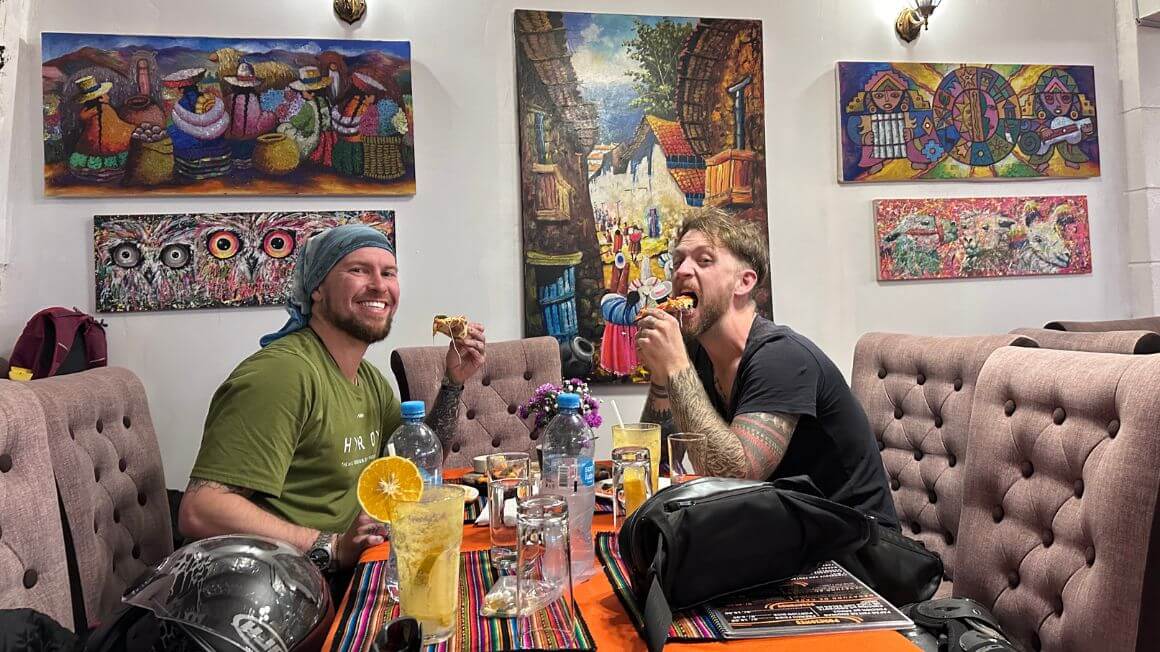
Photo: @willhatton__
10. Review your work before hitting publish. Then do it again.
When you’ve spent hours on an article or an edit, it’s easy to fall into the idea of smacking that publish button as quickly as possible. But I implore you not to do that – there will undoubtedly be a mistake (or many) that you’ve missed. Another 20 minutes after days of work won’t kill ya’ mate.
Travel Storytelling Gear
While this doesn’t really apply as much to writing (any decent computer will do), the visual travel storytelling space is constantly evolving. And while skill will always usurp utilities, quality visuals and audio DO matter.
Final Thoughts on the Art of Story Telling
Biting the bullet, hitting the road and becoming a travel storyteller changed my life beyond my wildest dreams. No piece of fiction I could have written when I first stepped off that plane in India at 19 could come remotely close to the dazzling, awe-inspiring and often cheeky adventure my life turned into thanks to this very website you find yourself on today.
Travel storytelling has not only allowed me to make a living out of my greatest passions, but it’s also given me permanent treasures to relive all these moments. I’ve also had the immense privilege to inspire and educate millions on the magic of the road.
I know it can be daunting AF to turn your journey into content, but I’m hopeful that by now you’re feeling a bit more keen on the process.
So pick a niche, practice, learn, practice some more and book that flight out. You have an entire world of stories in you just waiting to be told – so get the hell out there and get started 😉
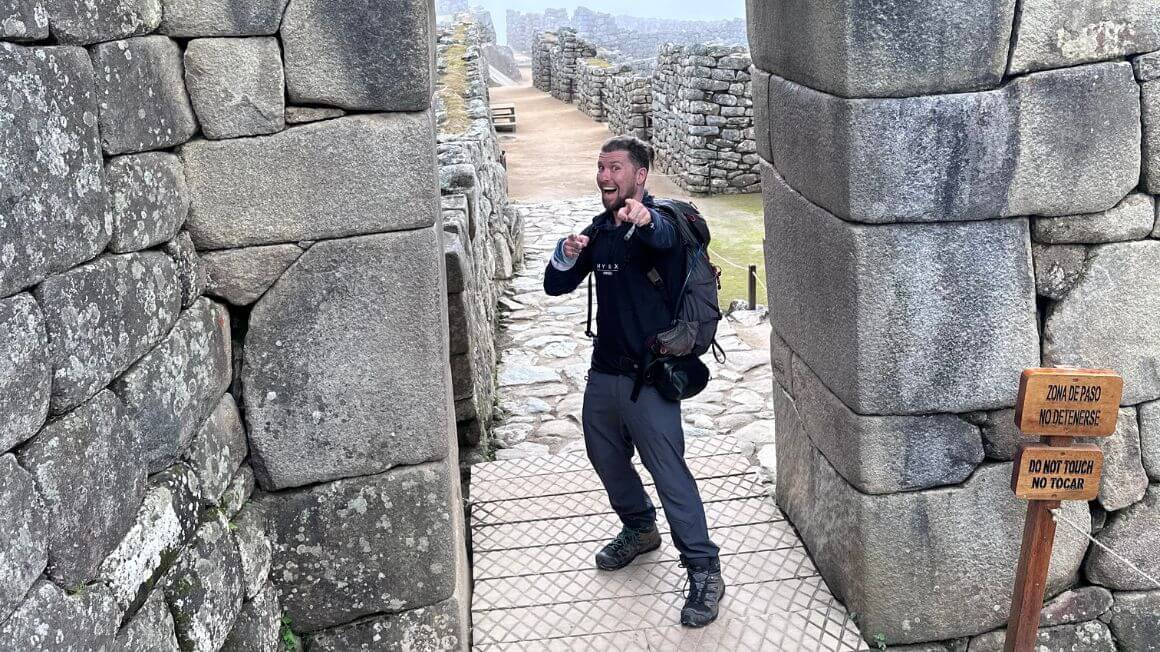
Photo: @willhatton__
Buy Us a Coffee!
A couple of you lovely readers suggested we set up a tip jar for direct support as an alternative to booking through our links, since we’ve decided to keep the site ad-free. So here it is!
You can now buy The Broke Backpacker a coffee. If you like and use our content to plan your trips, it’s a much appreciated way to show appreciation 🙂


